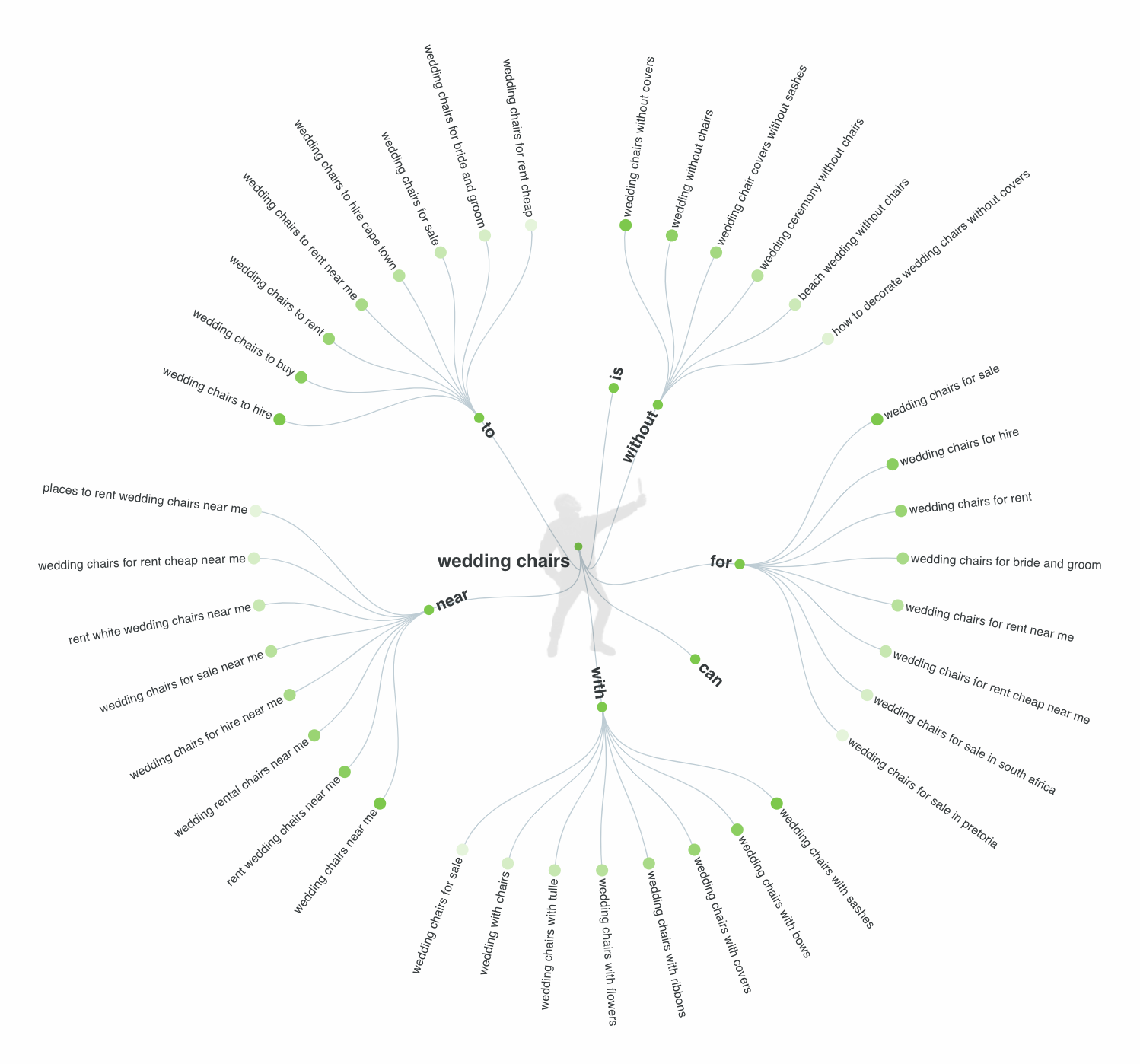I’ve been talking a lot about blogging on the blog recently (so meta, I know). We’ve talked about how to set up your Showit blog, why you should blog every client, and ideas for what to blog about.
Those are all great, but…how do you get those posts to rank in search? How can you make sure your blog posts are actually bringing traffic to your site?
Well, there’s a lot to it, but here’s the bottom line: The best way to get your blog posts to rank in search is to write thorough, well-written, well-organized content that answers a real question people have.
Before we dive in, I want to clarify that I believe SEO is just one of the purposes your blog serves. It also establishes your expertise, provides valuable content for your clients, and becomes part of your client experience. Just because you’re posting something to your blog, doesn’t mean it has to rank in search to serve your business well. The tips I’m sharing in this post refer specifically to the posts on your blog that you want to use to drive organic search traffic to your site.
That said, search is an incredibly powerful tool to drive traffic to your site. Think of how many times you used Google (or another search engine) today alone. Your potential clients are doing the same. Your job is to make sure that when they are searching the web, they can find the answers to their questions on YOUR site.
If you are serious about getting organic search traffic to your Showit site, it’s not enough to put some keywords in your page title and description and call it a day. A blog is an essential ingredient to SEO success as a wedding professional. In this post, we’ll be diving into the steps to writing a blog post that will rank in search:
Choosing a Good Topic and Keyword
Earlier I told you that a successful blog post answers a real question people have. More specifically, we want to find a topic that answers a real question your potential clients have. Here’s how to choose the topic for your post:
Brainstorming Blog Topics
A good topic is one that your potential clients are interested in or have questions about. My freebie 500 Blog Post Ideas for Wedding Professionals can help with the first step of brainstorming potential topics to write about. Another great method (and how I typically brainstorm my own posts) is to answer questions your audience frequently asks you. In fact, this post itself was inspired by a wedding planner friend who asked how she could get more visibility for her blog posts! Choosing a topic, however, is just the first step. The next step is to do some specific keyword research.
For the purposes of this post, let’s use an example topic for wedding planners from my free guide: “The different types of chairs you can rent”
I find it can be helpful to think really specific and niche when it comes to post topics. Wedding chairs are just one aspect of a wedding’s decor, and in the grand scheme of wedding planning, they definitely don’t seem like the MOST important detail. But, I bet you have heard your clients express questions or concerns about their wedding chairs! Plus, the fact that it’s such a niche, seemingly “random” topic makes it unlikely that others have already covered it in-depth (meaning there will be less competition). But we don’t want to just go off of a hunch. Now, we’re going to dive into some keyword research to make sure this topic will be able to rank well!
Understanding Search Volume and Difficulty
Two crucial factors to consider when choosing a keyword are search volume and difficulty. Search volume refers to how many people are searching for that keyword on a monthly average basis (more on how to find this in a bit). A potential keyword may sound great to you, but if it doesn’t have any search volume, it’s unlikely users will come across it since they simply aren’t searching for it. In that case, you may want to brainstorm other ways people may word that question or search.
Search difficulty refers to how competitive the keyword is. The higher the search difficulty, the less likely you will be able to rank for that keyword.
The sweet spot for your blog keywords is a medium search volume and low search difficulty. A blog post that ranks in search will be about a topic that people are searching for, but not that already has a lot of high-quality content on the results page.
Short-Tail Versus Long-Tail Keywords
Sometimes when we think of keywords, we think of things like “wedding photographer.” But as you can see in the graph below, top keywords like this make up less thank 20% of overall search traffic. The majority of searches are for more niche, highly specific key phrases. The “long tail” refers to the shape of the graph below – while these keywords individually have much lower search volume, there are a lot more of them.
A long-tail keyword is much more likely to hit that sweet spot of medium volume and low difficulty. These long-tail keywords are also so highly specific that it means users are probably searching for exactly what you’re answering. That means they’re more likely to stay on your site, and potentially sign up for your emails or complete your inquiry form. Research shows long-tail keywords are much more likely to convert than short-tail keywords!

Source: raventools.com
Conducting Keyword Research
So, how can you find a keyword with low difficulty and medium search volume? Keyword research! There are a lot of great paid tools out there if you have a budget to work with, like SEMRush, Alexa, and Ahrefs. But, you can definitely make do with free tools like Ubersuggest and Answer The Public. Keywords Everywhere is another great tool that’s not free, but very affordable! Don’t be confused if you see conflicting information or numbers from these different sources. They are often using different metrics to create their estimates, so there is sometimes a discrepancy. It’s not an exact science, but a matter of getting a good enough sense of what keywords will work well.
Let’s go back to our example of wedding chairs! My initial idea was a post about the different types of chairs for weddings, so let’s see how we can refine that into a keyword so our blog post ranks in search.
First, I’m going to type “wedding chairs” into Answer the Public. This will give me a good sense of what kinds of questions people have about wedding chairs. Here’s an example of the kind of thing you’ll see as a result, a wheel of search queries:

Looking over the various queries I see, I do notice that “wedding chair types” and “wedding chair styles” are listed, which validates my original idea. However, I also notice that a LOT of these queries have to do with renting wedding chairs. It seems like this is a very common question people are wondering about wedding chairs. I’ll keep that in mind as I continue my research. Now, I’m going to do some research in Ubersuggest.


So far, so good. It looks like “wedding chair types” has some good search volume. I’m a little concerned about the search difficulty, but I’ll keep that in mind as I check one more thing.
I always like to use Google itself as a tool as well. Be sure to open an incognito or private browsing tab so your results aren’t skewed by your own past searches. As a wedding pro, this is also great because it will help you understand local search. Based on this search, I’m seeing that “wedding chair types” is bringing up a lot of sites I’d have a hard time competing with: Martha Stewart Weddings, WeddingWire, and Brides are all on the first page of results. Most users don’t look past page one of Google, so I think I was pretty spot on with thinking this keyword might be too difficult to rank for. However, if I search “wedding chairs,” there are a few local results and “wedding chair rentals” brings up rental companies in my local area. Google’s algorithm seems to have figured out that users searching those terms are looking for local results.
So, I’m going to choose “wedding chairs” as my keyword. I don’t know if I can compete with the rental companies themselves, but I think I can write the most comprehensive guide to wedding chairs in my local area. I still want to include information about chair types, so perhaps I can feature local venues where different types of chairs would work best. I also can add more value for my users (and show Google that my post is relevant to local search) by featuring rental companies I recommend.
There’s really no guarantee that my research will pay off, but I am heading into writing this post feeling confident that I’ll be creating content users are looking for and that I can potentially rank for. That’s the goal of keyword research! It’s a lot of experimentation and learning over time what works for your audience. Celebrate the small wins and don’t get discouraged along the way!
Writing Quality Content
Now that we have our keyword in place, we have to actually, ya know, WRITE the post! “Writing” is actually a bit of a misnomer here, because a lot of the work will be organizing and structuring the post!
Outline Your Subheadings
Did you notice my table of contents at the top of this post? I wrote that after I decided my topic and keyword but before I actually started writing! In fact, I outlined my entire post from those headings (my H2s) and then the sub-headings (my H3s). For example, in this section, “Writing Good Content” is an H2, and “Outline your subheadings” is an H3. In our wedding chair example, our H2 subheadings might be, “The Different Types of Wedding Chairs” and “Where To Rent Wedding Chairs in [your city here].”
Write Your Content
Now, under these H3s, you can write more descriptive, detailed content. Keep your paragraphs short and sweet. If you can use fewer words to describe something, you should!
Using Images
Would you want to scan through a post that was a giant wall of text? I definitely wouldn’t, and neither would your users! Images help break up the text, illustrate your points, and create a better experience for the user.
Some good practices to follow for your blog images are the compress them for optimal loading time (On Showit you can use the Smush plugin for this, or use an external tool like ShortPixel). Give your image a descriptive file name (like “Chiavari Wedding Chair,” not “DSC_53934”) and write descriptive alt text before inserting it in your post.
Don’t feel like you need to overload your user with images, though. Keep in mind that the more images on a page, the slower the page speed. Images are part of a great user experience, but so is a page that loads quickly!

ShortPixel is a tool that compresses images to create smaller files without sacrificing quality.
Including Links
Throughout your post, incorporate internal and outbound links where they are relevant. An internal link links to another page of your own site, while an outbound link links to other websites. This creates a better user experience for your user and signals to Google the relevance of your post. Take a look at this post and you’ll notice I’ve linked to my own blogging resources as well as SEO and keyword tools that will help you put my tips into practice.
Keep these links natural and relevant in context! It’s all about serving your user with thorough, useful content.
On-Page Optimization
As a Showit user, Yoast is one of the plugins already included on your blog. In WordPress, go to the Plugins tab, scroll down and “activate” the plugin. The Yoast tool will now appear at the bottom of the page when you are drafting a new post. Yoast is a tool to help with your on-page optimization. Here are a few things to keep in mind:

The Yoast plugin for WordPress is a great guide to on-page optimization.
Title and Meta-Description
Both your title and meta-description should include your keyword. These are user-facing items, so another important goal is to write titles and descriptions that entice users to click. Again, there’s no exact science here, it’s all about experimenting and knowing your audience! It’s always great to brainstorm a few titles before choosing the one that will resonate best with users. Yoast will guide you as far as the length for the title and meta-description.
Incorporating Your Keyword
Yoast will also help you figure out if you are incorporating your keyword throughout your post. It’s important to avoid “keyword stuffing” and only include your keyword where it naturally makes sense. You don’t want to sound like a robot to your users! You don’t have to listen to all of Yoast’s suggestions, though! Think of it as just a guide. For example, in the screenshot above you can see that Yoast gave me a “red light” for not including my keyphrase in my first paragraph. But I want my post introductions to sound like ME! I think it’s much more important to capture the user’s attention than to include a keyword if it doesn’t naturally fit, so I ignored Yoast’s suggestion!
Readability
Yoast is a better sixth grade English teacher than I ever was! It will call you out for not using enough transition words, using too much passive voice, and more. Again, I think it’s okay to ignore some of these suggestions from Yoast. Your blog post should sound like YOU! You want to connect with your readers and sounds like yourself while ensuring that the post is well-written and readable.
In Conclusion
The keys to a blog post that ranks in search are:
- A topic that’s relevant to your audience and a keyword people are really searching for
- Writing thorough, quality content that provides value to readers and answers their questions
- Optimizing your post for search
What questions do you still have about getting posts to rank in search? And ps – my “wedding chair” post idea is totally up for grabs! I’d love to see if you end up writing a post about it (email me at alex@alexcollierdesign.com)!
p.s. Need some ideas to get you started with blogging? Check out my freebie, 500 Blog Post Ideas For Wedding Professionals. It’s jammed packed with ideas specific to your niche (including calligraphy, planning, DJing, catering, and more!). You are definitely going to want to snag this one!

Leave a Comment